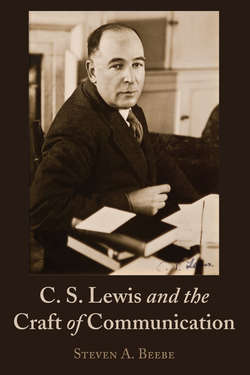Читать книгу C. S. Lewis and the Craft of Communication - Steven Beebe - Страница 23
На сайте Литреса книга снята с продажи.
Effective Communicators Are Transpositional
ОглавлениеThe third principle is that of transposition. Lewis described this unique communication concept in a sermon published as delivered at Mansfield College, Oxford University, in June 1944. To transpose is to transform something from one level to another. Transpose is a musical term. To transpose from one musical key to another is to play the same tune written in, for example, the key of D down a whole tone to the key of C. All notes in both the melody and harmony are played, or transposed, to a different key. Transposition for Lewis was always a process of going from the higher to the lower. As he described the process, transposition is moving from a richer, more-detailed, more-colorful, multidimensional experience to a less-rich, less-detailed but nonetheless accurate explanation in an attempt to communicate (or transpose). He sought a way to illustrate how an ineffable emotion could more easily be understood by someone. Some experiences, especially emotional ones, are simply too rich, “high,” inexplicable, or foreign to the experiences of others, to adequately describe. “Symbolism,” wrote Lewis to Sister Penelope in a March 25, 1943 letter, “exists precisely for the purpose of conveying to the imagination what the intellect is not ready for.”130 Transposition is a communication process that uses similes and metaphors—especially visual metaphors—to express emotional ideas that the “intellect is not ready for.”131
How do you describe the emotional impact of Grand Canyon to someone who is blind? How do you express the joy experienced when listening to Beethoven’s Ninth Symphony to someone who is deaf? In each instance one would transpose—use a means of communication with which the listener is familiar—to describe a richer (“higher”) experience that is completely foreign and unobtainable. Metaphor, simile, and allegory are key communication strategies to express the inexpressible. The story of the incarnation, suggests Lewis, is a classic example of the metaphorical process of transposition when myth became fact.
Effective communicators are able to select symbols, images, metaphors, or make other comparisons to clarify that which is difficult to explain prosaically. The principle of transposition makes the ineffable effable, the murky clear, and the difficult-to-comprehend more easily grasped. Lewis was a master of this technique often relying on visual metaphor, comparisons, “supposals,” and other tropes to express complex or hard-to-explain ideas. Chapter 6 describes the process of transposition in detail and uses Lewis’s own words and examples to illustrate the concept.
←23 | 24→
